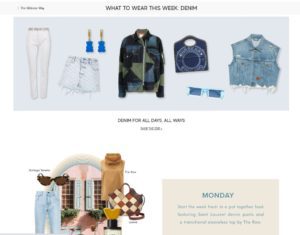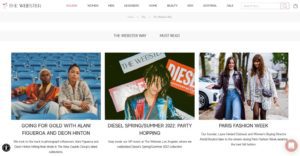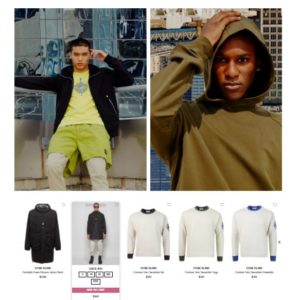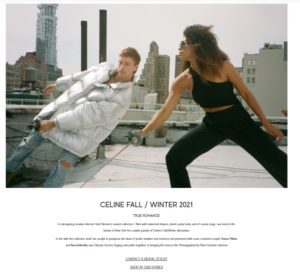Editorial content is paramount to how luxury retailer The Webster positions its brand online.
The Webster launched 12 years ago with its first store in Miami. Today it operates eight stores, three of which opened since January 2020. In 2016 it started selling online. Ecommerce has steadily grown as a portion of its sales each year, and today is roughly a quarter of its total sales, says Cecile Levinger, vice president of sales and client experience at The Webster.
The Webster sells a variety of luxury apparel and accessory brands. But unlike a typical department store, which would traditionally merchandise the products by brand, The Webster showcases products by a certain look, mixing brands together. Instead of a store section dedicated to one brand, each section at The Webster’s store conveys one of its vision or style of the season. This same type of in-store merchandising technique is applied online, in its “Editorial” navigation page, she says.

The Webster merchandises its products online by mixing brands together.

Editorial is a top navigation page on TheWester.com, leading shoppers to its editorial content.
“The Webster has its own vision of trends, and The Webster is very linked to art and fashion photography,” Levinger says. She describes this style as playful and joyful, with models interacting and having fun.
To bring this concept online, The Webster has a team of five employees, including two photographers, who work on about two photo shoots per month. Besides content pieces that push The Webster aesthetic, it often conducts photo shoots commissioned by brands, Levinger says.
After the photo shoot, the ecommerce team of about 15 employees uploads the content piece to its site under The Editorial section. The retailer also uses the photo content in its newsletter and social media accounts, and its sales team also uses the photos.
Like a photo shoot in a magazine, the editorial web pages have large photos of models, with captions describing each garment. If The Webster currently has those items for sale online, it will have the products icons below the image for shoppers to easily add to their carts or go to the product detail page. If The Webster doesn’t have that garment for sale online, as a portion of luxury brands don’t allow ecommerce sales, Levinger says, then The Webster has a link for the shopper to connect with a stylist if she is interested.

The editorial pictures sometimes feature a shoppable icon so readers can purchase the items in the photo.

The Webster will also feature garments that are only sold in its stores.
“Those pictures are a big investment for the company, in terms of effort and time, and something that is really very important to us,” Levinger says. “The vision is what clients come to us for, the unique creation and the unique aesthetic.”
The Webster measures the success of the editorial part of its ecommerce site via clicks and traffic and how many times a shopper goes to a product page or purchases something online after visiting the editorial page.
Levinger would not reveal any exact figures but says that conversion on these editorial blog pages is lower than when a shopper types a product into its search bar or when a shopper clicks on an ad from a marketing campaign. But, shoppers who visit the editorial pages have a higher lifetime value than its typical shoppers, she says.
“The editorial content is much more for pure fashion shoppers, less than shoppers from a paid campaigns,” Levinger says. “It’s also the one that clients engage with and then the retention of those clients is higher. They’ve been attracted to the artwork, so usually, they share our vision and appreciate how we do our style.”
The editorial content-readers are more likely to engage with The Webster in the long-term, such as contacting a digital stylist and will eventually make a purchase even if it’s not immediate, Levinger says.
This type of content doesn’t resonate with all shoppers, but is important for a certain segments, says Chelsea Mueller, a senior consultant at ecommerce consulting firm FitForCommerce.
“There is absolutely value in enriched content for the right personas,” Mueller says. “There are customers who need that strong connection to a brand—to know who the brand is and how that aligns with their needs.”
Online shoppers, however, place blog content low on their wish-list for what retailers can do to deliver a well-designed and functional online experience, according to a Digital Commerce 360/Bizrate Insights Customer Experience survey of 1,000 shoppers in September 2021. Only 5% cited blog content as an important feature to a well-designed site.
Levinger knows editorial content isn’t meant to be a conversion slam dunk. She gives the example of two types of content The Webster would put on social media or in a newsletter. For the article “shop the 10 coats of the season,” which includes pictures and links to each coat, The Webster knows it will generate sales from shoppers looking for coats. But when it puts out a content series of five models out at night in a romantic setting, that attracts a distinct set of shoppers, who wind up buying a coat one of the models is wearing that the shopper wasn’t even looking for.
Favorite